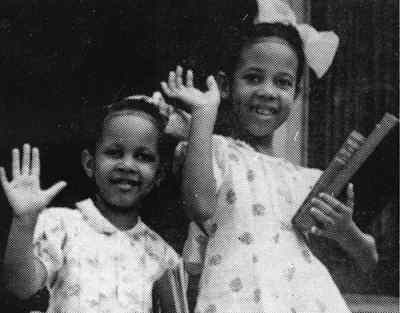

The Louisiana Division offers CD-ROM access to the FamilySearch databases compiled by the Church of Jesus Christ of Latter-Day Saints. One of the databases included in FamilySearch is the Social Security Death Index. The SSDI lists birth date, year and month of death, and place of residence at the time of death for more than 47 million persons who died mainly between 1962 and 1996; some persons who died in the early days of the program, from 1937 on, are also represented. To be included in this file, individuals had to meet the following criteria: they received Social Security benefits while living or their survivors received these benefits; and the information was properly entered into the Death Master file. This print-out from the SSDI lists the birth dates and death months/years for the grandfather and uncle of Mayor Marc H. Morial. View text of document
The FamilySearch Ancestral File contains information on about 15 million people linked into family groups and pedigrees submitted to the Church by individuals and organizations around the world. This print-out displays the data on the family of Alex Haley, the author of Roots. View text of document

The FamilySearch International Genealogical Index provides birth, marriage, and death information on over 240 million deceased persons who lived throughout the world between 1600 and 1900. It is arranged by country and subdivided by political subdivision such as state, department, county, etc. The print-out shown here provides information on the birth of noted African American philanthropist Thomy Lafon. View text of document
Newspaper obituaries and death notices are an important resource in genealogical research. Their use in New Orleans is facilitated by the Louisiana Division's Biography/Obituary Index. Numbering 650,000 cards, this is an alphabetical file which indexes obituaries in New Orleans newspapers and biographical information in older Louisiana collective biographies. Biography cards provide the call number, author, and title of the book, and page on which the reference is located. Obituary cards usually contain the date of death, age, and exact reference by page and column to the original death notice and/or newspaper article.
The Louisiana Weekly is not included in the obituary index. While the Weekly includes various articles, cards of thanks, "in memoriams," and other sources of information on deaths of black people, it has not incorporated a separate death notice column such as that employed by the Times-Picayune. This photocopy from the Weekly of November 16, 1935 illustrates the death information to be found in its columns. View document

These pages from an 1835 burial register for the old Bayou St. John Cemetery show that free blacks, slaves, and white persons were all recorded together despite the fact that local cemeteries often had separate sections reserved for each group. The Louisiana Division and City Archives hold records for many other New Orleans cemeteries, both city-owned and private. Burial records sometimes include important information on the origins of individuals in addition to data on age, race, occupation and, of course, cause of death. View text of document
This list of registered voters in the city's Thirteenth Ward for the period 1891-1896 indicates that a considerable number of African American citizens were on the voter rolls prior to the legal disfranchisement of most Louisiana blacks in 1898. Although this volume indicates only name, address, age, and race, the Archives also has microfilm copies of records from the same period that include place and year of birth, name of householder at the address given, length of residence in the state, parish & ward, and the original signature of each registrant. View text of document.


Return to Online Exhibits Page
2/1998--we/iw